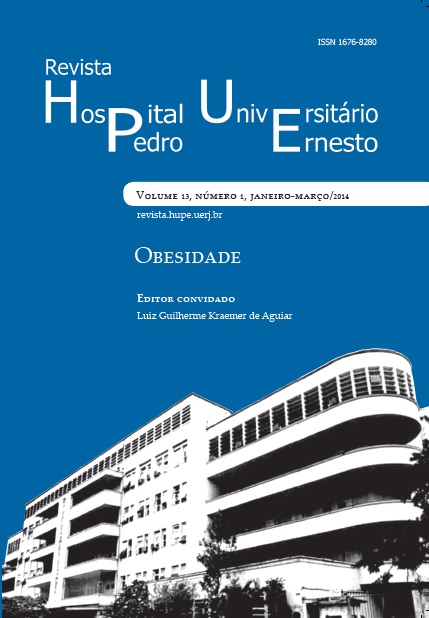Obesidade e síndrome dos ovários policísticos: vínculo fisiopatológico e impacto no fenótipo das pacientes
DOI:
https://doi.org/10.12957/rhupe.2014.9796Resumo
A síndrome dos ovários policísticos é uma desordem endócrina complexa, frequentemente observada em mulheres na faixa de idade reprodutiva. Embora sua etiologia permaneça pouco esclarecida, há crescentes evidências de que a resistência à insulina e à hiperinsulinemia compensatória desempenha um papel central na patogênese da desordem. A resistência à insulina é intrínseca à síndrome, porém, sobrepeso, obesidade e particularmente obesidade central podem exacerbá-la, com possíveis consequências no fenótipo da desordem.A prevalência exata de obesidade em portadoras da síndrome dos ovários policísticos é desconhecida, sabendo-se, contudo, que o aumento de adiposidade global e visceral é bastante comum nestas pacientes e parece variar com a idade, raça, fatores genéticos e ambientais. Alguns estudos sugerem que a obesidade apresenta pouco impacto nos sinais, sintomas ou desenvolvimento da síndrome dos ovários policísticos, outros, porém, demonstram que o excesso de peso e o acúmulo de gordura intra-abdominal podem agravar a hiperandrogenemia, distúrbios menstruais, anovulação crônica, hipertensão arterial e algumas anormalidades metabólicas tais como dislipidemias e intolerância à glicose, elevando o risco de infertilidade, diabetes mellitus, aterosclerose e doença cardiovascular clínica/subclínica. A obesidade nestas pacientes também tem sido associada à redução de resposta aos tratamentos para infertilidade, elevação do risco de complicações gravídicas, câncer de endométrio e comorbidades psicológicas.A redução do peso corporal através de mudanças comportamentais, medicamentos ou cirurgia bariátrica representa, portanto, a primeira linha de abordagem terapêutica em mulheres obesas portadoras da síndrome dos ovários policísticos. Em resposta à diminuição da adiposidade, há melhora na resistência à insulina e hiperandrogenemia com benefícios em diversos parâmetros, especialmente naqueles relacionados aos distúrbios reprodutivos e metabólicos.
Descritores: Síndrome dos ovários policísticos; Resistência insulínica; Obesidade; Fenótipo; Fisiopatologia.
Revista HUPE, Rio de Janeiro, 2014;13(1):33-37
doi:10.12957/rhupe.2014.9796


